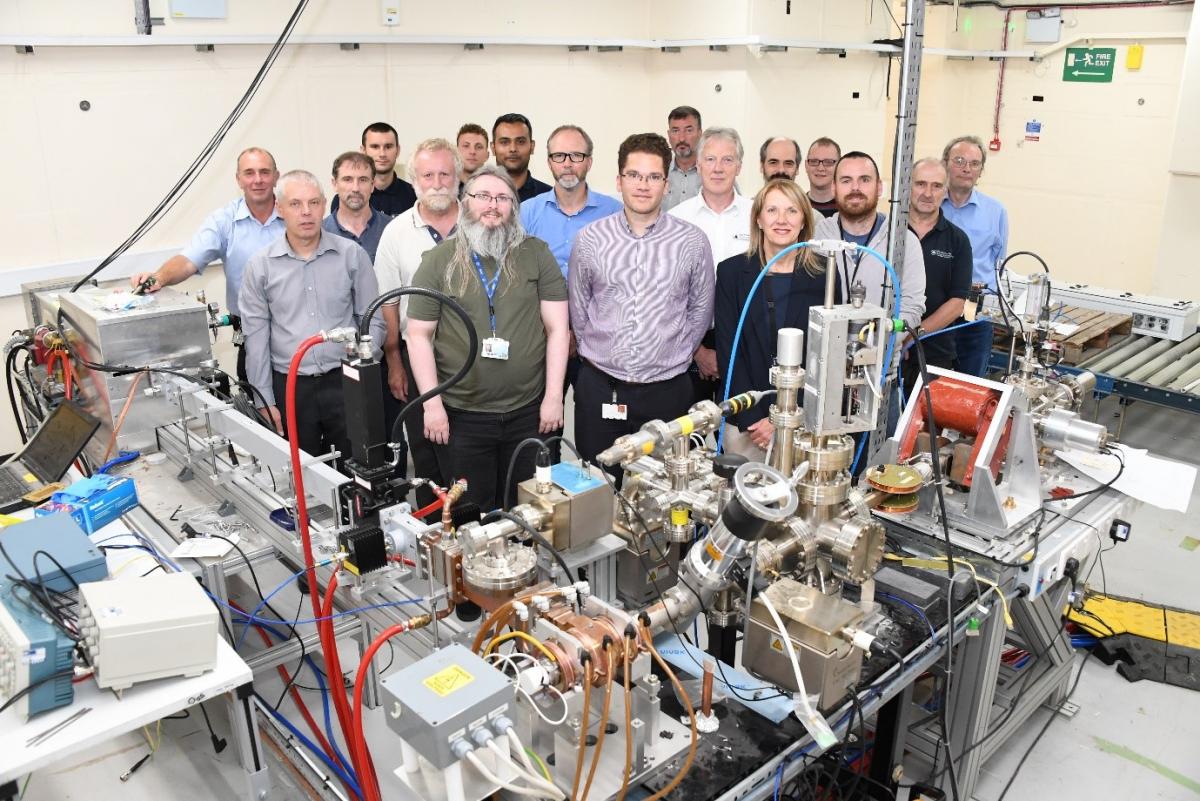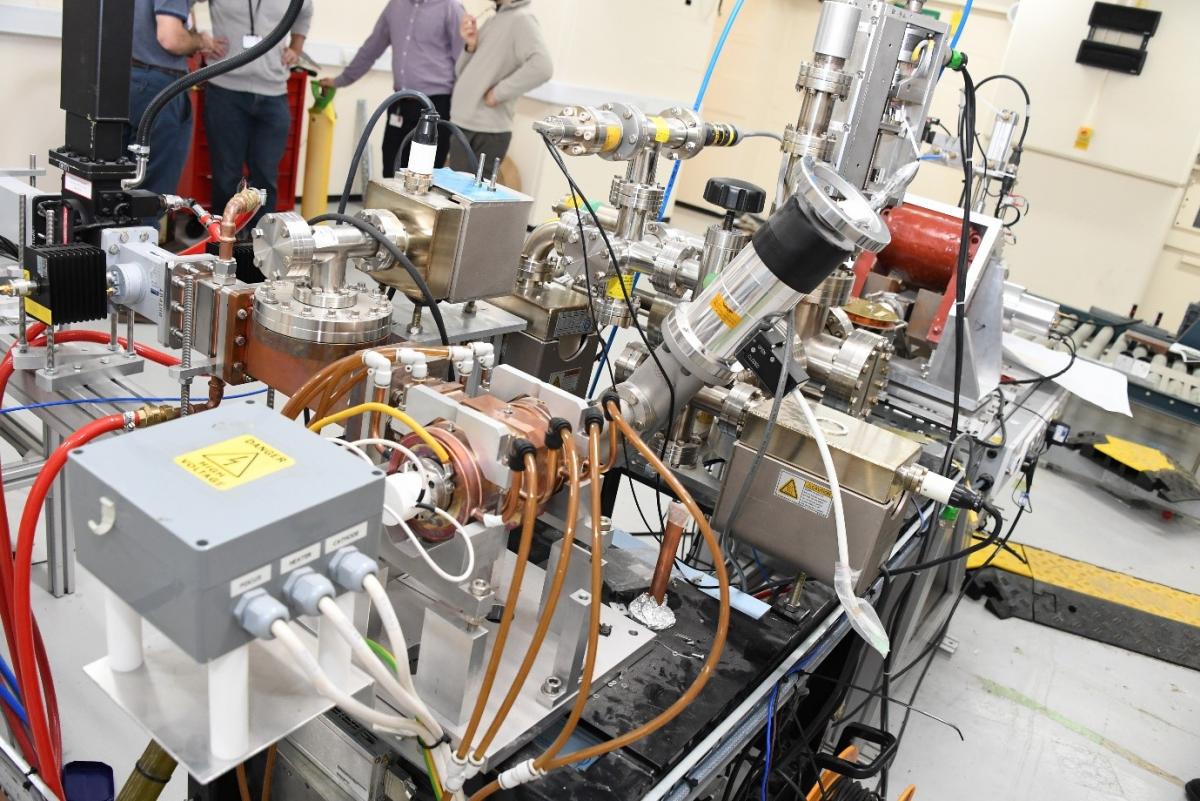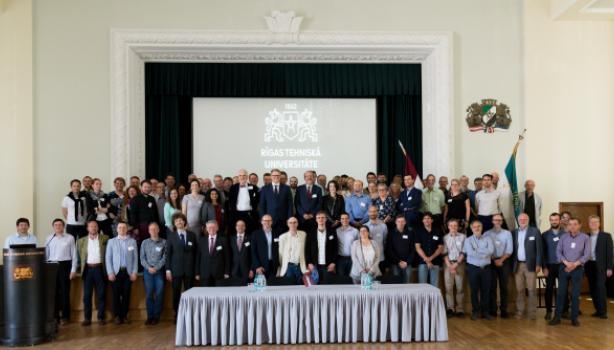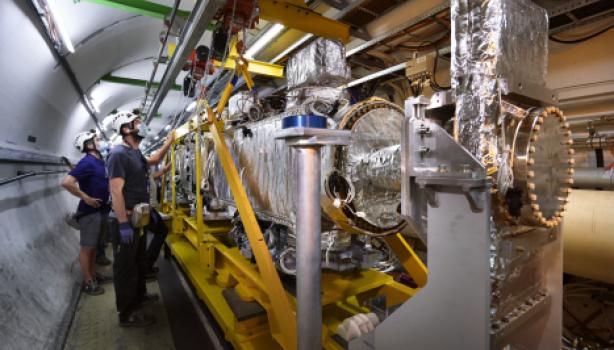A small scale particle accelerator designed, and commissioned at STFC Daresbury Laboratory and the Cockcroft Institute has successfully accelerated an electron beam to 3.5 MeV. The linac, designed by Lancaster University and STFC Accelerator Science and Technology Centre (ASTeC) and Technology Departments, is optimised for X-ray screening of aviation cargo which is typically much smaller than shipping containers, i.e. 1 m3, and hence lower energies are required.

The Compact aviation cargo scanning linac commissioning team. (Pictures courtesy of STFC)
The new linac can vary its energy between 1-3.5 MeV and has a smaller footprint than other similar linacs. The beam can produce a peak current of 100 mA, and is pulsed at 200 Hz with 5 microsecond pulses. The linac operates at S-band and utilises a 17 keV thermionic electron gun and an S-band magnetron from Teledyne e2v. The RF linac structure utilises a pi mode, rather than the standard side-coupled design, to reduce the physical transverse dimensions thereby minimising the diameter of the shielding required. X-rays are produced by firing the beam onto a tungsten target to produce bremsstrahlung radiation. An important part of the project is to make a linac with simple controls and feedback, such that the energy and beam dose can be varied by operators at the airport without the need of accelerator scientists, and work in the next few months will be focussed on implementing techniques to accomplish this mode of operation.
Varying the beam energy and dose is important to ensure good contrast can be achieved, regardless of whether the cargo is filled with low attenuating or high attenuating materials. The linac is attached to a diagnostics beamline so that the beam can be fully characterised, or can be steered to the target. Cargo scanning typically operates with a vertical 1D array of detectors which is used to provide a 2D image by moving the cargo or the gantry horizontally. The facility therefore also includes a conveyor to move the cargo and a detector array to allow in-situ imaging. This follows on from a previous project that developed a highly compact X-band cargo scanning linac which was commissioned to operate at 1.5 MeV for a mobile cargo scanning applications.

The 3.5 MeV accelerating structure and electron gun (Pictures courtesy of STFC).
Dr Graeme Burt from Lancaster University and the Cockcroft Institute who led the linac design said “R&D into small industrial and security accelerators is vital to making progress in the field of accelerator engineering and ensuring new research in HEP machines is properly exploited in other areas”.
After completion, the prototype will be turned into a user facility for industrial and university users to access small industrial type electron beams for research into industrial, security, medical and environmental applications of accelerators run by STFC at Daresbury Laboratory. This facility perfectly complements the existing suite of accelerators at Daresbury including the existing 5 MeV VELA beam at Daresbury which delivers high quality, short-pulse, low emittance beams for industrial and academic exploitation purposes. Prof Peter McIntosh, Deputy Director of STFC ASTeC that enabled development and construction of the linac facility at Daresbury and will support its ongoing operation said, “translating the highly effective linac development capabilities we have within STFC and the Cockcroft Institute here at Daresbury, into industrial security applications such as this, is critically important and I’m excited at the prospect of now having a dedicated facility which can be utilised for furthering industrial application capabilities more extensively in the future”.
The facility development was funded by the STFC challenge led applied systems programme.
Anyone wishing to utilise the facility should contact Dr Donna Pittaway (donna.pittaway@stfc.ac.uk).


